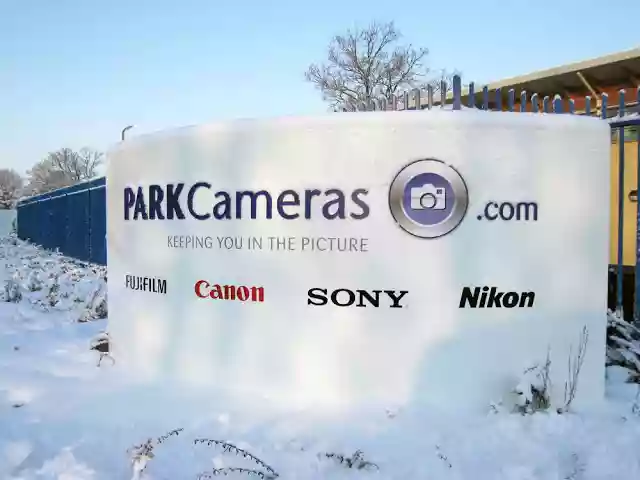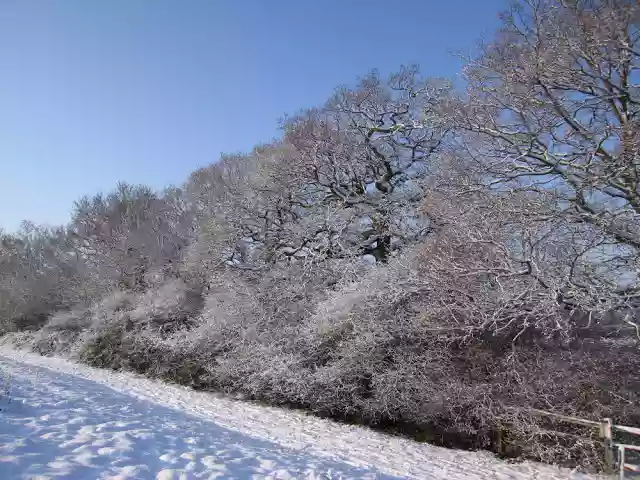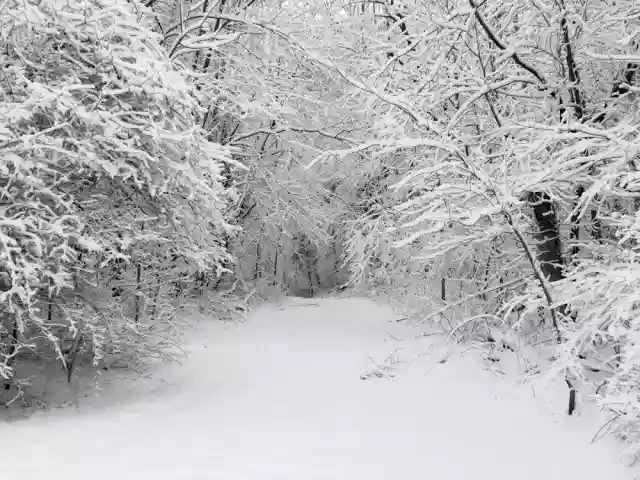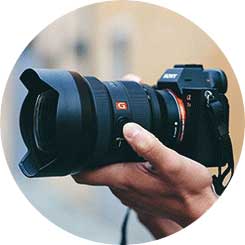- Call us: 01444 237070
- Contact Us
- Stores
- Sign In / Register
- Black Friday Deals
-
- Back
- Used Cameras
- Used Accessories
- Used Lenses
- Used Video
- Used Film Equipment
- Used Stock Alert
- Used Blank Test
- Sell or Part Exchange
- Used Clearance
- Recently Added Used Equipment
- Park Picks
- All Used Black Friday Deals
- Faulty
- Trade-In
- Blog
- New in
- Call us
- Contact us
- Stores
- Sign in
- Categories
- Tips & Inspiration
- Reviews
- News
- Events
- Features
- Buying Guides
- Competitions
How To Take Great Photos In The Snow
As Winter settles in and snow begins to fall across the country, we're taking a look at how to take some great snow and winter shots, and why this time of year is perfect to get some beautiful pictures. We’ve put together this guide to give you some tips and ideas for photographing snow scenes and winter photography in general.

A Guide to Winter Snow Photography
There’s nothing like a fresh snowfall to make a winter landscape appear truly dramatic. Snow is an inspiring photographic subject, but it’s also a tricky one to capture well, and many photographers find that the glowing bright snowy scene in front of their lens mysteriously turns into a depressing grey photo after they take the shot.
Photographing Wintery snow scenes
The biggest obstacle when photographing snow lies in your camera’s metering system. No matter how sophisticated it is, it’s designed to assume that it’s looking at “normal” subjects of an “average” brightness. Photograph a landscape in the summer with green grass, dark green trees, blue sky, and white clouds, and the different brightness levels in the scene often average each other out. Most of the time, the metering system will correctly expose these scenes. In simple terms, it does this by averaging bright and dark parts of a scene, so the final exposure renders the overall brightness almost a middle shade of grey.

What is 18% Grey?
You may have heard the term '18% grey' before. This is a middle shade of grey that reflects 18% of the light striking it. This has been a universal reference point in photographic exposure meters for decades. Middle grey is roughly the mid-tone on a grey scale - appearing to fall exactly between pure black and pure white. Subjects of this tone reflect about 18% of light, whereas white objects reflect nearly 100% and black objects absorb nearly 100%.
Simply put, most cameras assume that everything they photograph reflects 18% of the light, and expose accordingly. Put another way, your camera meters subjects assuming they should be photographically rendered as middle grey.

How to photograph snow in Winter
Freshly fallen clean, white snow is obviously much lighter and more reflective than 18% grey, but the camera will automatically try to reproduce it as grey by underexposing it by up to about two stops to correct for what it sees as an overly bright subject. This is exactly why many photographers will find their snow photos to be muddy and underexposed. If that happens however, you have a tool in your camera to deliberately lighten your pictures and have the white snow properly rendered. That tool is called exposure compensation.
If you have a compact camera, there’s a good chance that it will have scene mode dedicated to shooting snow. Just select the snow mode and away you go.
If you have a more advanced compact model, a DSLR, or a Mirrorless Camera, you can use exposure compensation to capture great shots. Using exposure compensation, you’re simply adjusting your camera to make the scene brighter than it ordinarily would do, producing the brilliant white shots you want. Ideally, aim for between +1½ to +2 stops of compensation.
Setting compensation for snow photography
Setting exposure compensation is quick and easy with most models of camera. Some have a dedicated exposure dial on their top, which will have markings ranging between -2 or -3 to +2 or +3. Simply turn the dial to a point somewhere between +1½ and 2 on the scale.
For DSLR cameras it’s just as straightforward. Most cameras will have a dedicated exposure compensation button with the symbol shown on the right. Having selected one of the manual exposure modes, labelled P, A or Av, S or Tv, you simply press or hold down the exposure compensation button and then turn the knurled dial or press the directional buttons to the right, until the display is showing a setting somewhere between +1½ or +2 on the scale.
Exposure compensation with a Canon DSLR
With a Canon DSLR, switch the mode dial on the top of the camera to P, Av, or Tv mode. With an entry model such as the EOS 2000D, or a mid-range Canon model such as the EOS 800D or similar, hold the camera grip as you would normally in your right hand, then use your thumb to press and hold the exposure compensation button (also marked with the AV symbol) on the back. At the same time turn the dial in front of the shutter button to the right. Keep going until the marker on the LCD screen is set to a point between 1½ and 2 on the scale.
For Canon models that have the Quick Control menu, identified by a Q Button on the back, it’s equally simple. Again, turn the mode dial to either P, Av or Tv mode and press the Q button on the back. Use the quick control dial or directional buttons on the back of the camera to highlight the exposure compensation adjustment and turn the dial in front of the shutter button to the right until the marker on the screen is between 1½ and 2 on the scale.
RAW recording mode
Dialling in the correct amount of exposure compensation will involve a bit of trial and error. Not all winter scenes are equal and in some cases you might want snow to appear a bit darker than normal to show texture, so keep the compensation lower to not more than 1 or 1.5 stops.
If your camera has a RAW shooting mode, then using that will allow you to adjust the exposure afterwards using your computer, but since you can normally only adjust the exposure by 2 stops (either positive or negative) you’ll need to apply some kind of positive exposure compensation in-camera before shooting, to provide you with the flexibility you need.
Why white balance is important for Winter photography
White balance settings tell the camera the colour temperature of the light source you are shooting in, so it can create the appropriate colour cast for each scene. Most cameras have several automatic presets for common light sources: Auto, Daylight, Shade, Cloudy, Tungsten, Fluorescent, Flash, etc.
Many cameras also allow photographers to take a custom white balance, or even dial in a specific colour temperature (measured in Kelvins) to better match your scene, particularly for unusual or mixed-lighting scenes that are not covered by any of the preset options.
Photographing snow in winter implies you will be outside. However, differences in time of day, geographic region, and weather conditions can make a huge difference to the colour temperature of your light source - even though the ‘light source’ in this case is always the sun - which means that your white balance may need to be adjusted and the preset for 'Daylight' may not always look the best.
The preset options are normally pretty accurate, but remember to use the one that most closely matches your light source and weather conditions. On sunny days with clear blue skies, it’s common for snow to appear to pick up a slight blue tint; experiment with the Cloudy or Shade WB settings to warm-up the overall colour and neutralise that blue colour cast. If you shoot RAW images, you can change your white balance while editing, regardless of your camera settings at the time of shooting.
Throughout winter, the white balance you’ll need to use for your photography will change. At dusk, later in the day when the sun has gone in, your photos will have a heavier blue cast; you can compensate for this by using a warmer temperature in the manual white balance settings. During snow-less days in winter, your white balance will need to be more normal, but the low angle of the sun in the sky will still tend to make your images cooler (bluer) in colour so it’s likely that you’ll need to adjust your settings as the season changes.
How and why to use your camera's histogram
A histogram is a chart that represents the distribution of pixels in each image. It is visible on the rear LCD screen during playback, and is a very useful way to evaluate exposure. Histograms are sort of mountain-shaped; the height of each peak indicates how many pixels were recorded at particular brightness levels.
The most important part however, is how the display looks side-to-side. The left side of the chart represents shadow tones in the image; the right side represents highlight areas, and the centre represents mid-tones.
Reading a histogram properly helps photographers determine the appropriate exposure for the scene and whether they are at risk of severe under or overexposure. When photographing snow, you are likely to see histograms with many more pixels to the right of the chart, on the highlight side. This is completely normal when photographing bright subjects.
However, if your histogram shows portions of the graph that appear to get cut off on the far right, that means portions of your scene are severely overexposing to the point that detail may be lost – this is called being ‘blown out’. This is a warning that your exposure should be adjusted. Try reducing the amount of exposure compensation, until you see that no part of your histogram is cut off at the right edge.
Another way to check for overexposure during playback is using the highlight alert. When active, this alert causes all portions of the frame on the verge of overexposing to blink on and off.
With many DSLR’s this is an optional feature that can be enabled or disabled using the playback menu.
Cold weather tips on a snow photoshoot
If you have a lens hood for your camera, then make use of it. The flare caused by low winter sunlight and snow can make photos look hazy. You should avoid using flash too, as it can bounce off the snow and cause overexposure, and if it happens to be snowing while you're shooting, the flash will likely turn snowflakes into distracting balls of overexposed light. Although, if you’re photographing snow at night, using flash can freeze the falling snow flakes in front of the camera and can be a nice, if unintentional, effect. For night snow photography, use a tripod and expose for the low light scene (see our blog on Low Light Photography for some great tips) then add a burst of flash to capture the falling snowflakes.
Battery life is often reduced in cold conditions, so fully charge your battery before setting out, and you might find keeping the battery warm in your pocket before you’re ready to start shooting is also beneficial. Unless your camera has weather sealing, flakes of snow that land on it will quickly melt and the water could potentially damage the electronics. You can either cover the camera with a clear plastic bag with a hole at the front for the lens to shoot through, and wrap an elastic band around the bag on the lens barrel to hold it in place, or buy a rain cover to protect your camera in both rain and snow conditions through winter.
In addition, don't try and take pictures as soon as you come out of the cold into the warmth. The camera needs to acclimatise, and if pulled straight out you'll see the lens mist up. Leave the camera a few minutes before attempting to take pictures.
Finally, be sure you wrap up warm, take your mobile phone with you, and be careful. Try out some of our tips and have fun - there are some amazing shots out there waiting for you.
Park Camera's top tips for snow photography
- If you have a compact camera, use the snow scene mode for optimal results.
- Adjust the white balance to eliminate the blue colour cast from snow – ‘Cloudy’ might give better results than the Auto settings.
- Dial in some exposure compensation. 1½ to 2 stops should be a good starting point.
- Use your histogram to check your exposure and prevent blown highlights. The graph will extend further over to the right than you're used to seeing because of the snow - this in normal.
- Fully charge your batteries and get some extra spares.
- Wrap up warm and keep your camera dry - use a plastic bag or rain cover if necessary.
Let us know how your snow photography expedition goes and if you would like to receive more tips about photography in the snow or photography in general, follow us on Twitter, Facebook, Instagram and YouTube, or come and visit us in our Burgess Hill or London stores for expert advice and assistance.
Share this post:
By Park Cameras on 12/01/2017

Trade in your old equipment
Fast and easy trade in service ensures your old gear is collected efficiently and you are paid quickly! It's very simple to trade in your unwanted photography gear. Just head over to our dedicated Sell or Part Exchange page, fill out the details, and we'll get back to you with an offer for your old gear. Take the cash, or put it towards the cost of your new gear. It's up to you! Find out more
sign up to the newsletter
Keep up to date on the latest photography news, events and offers. Sign up now